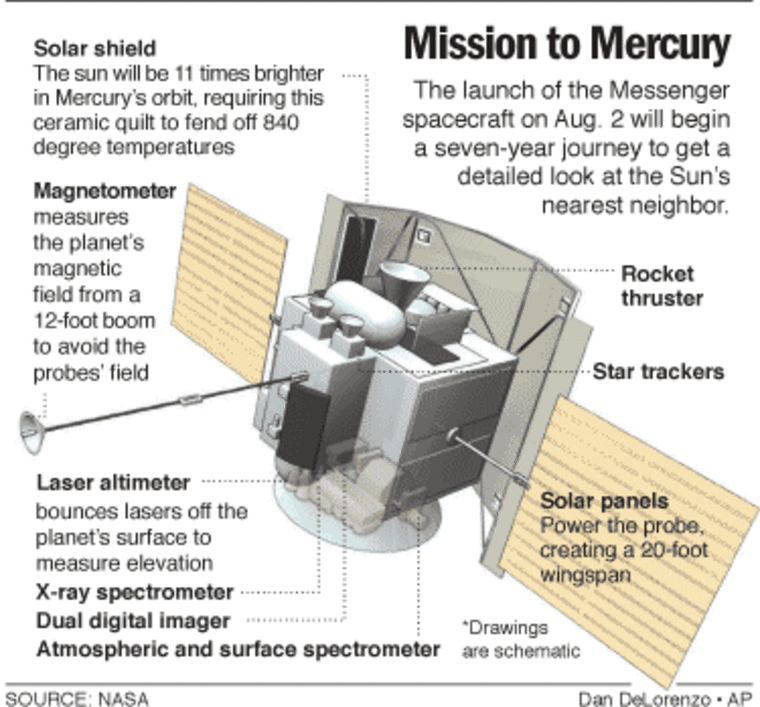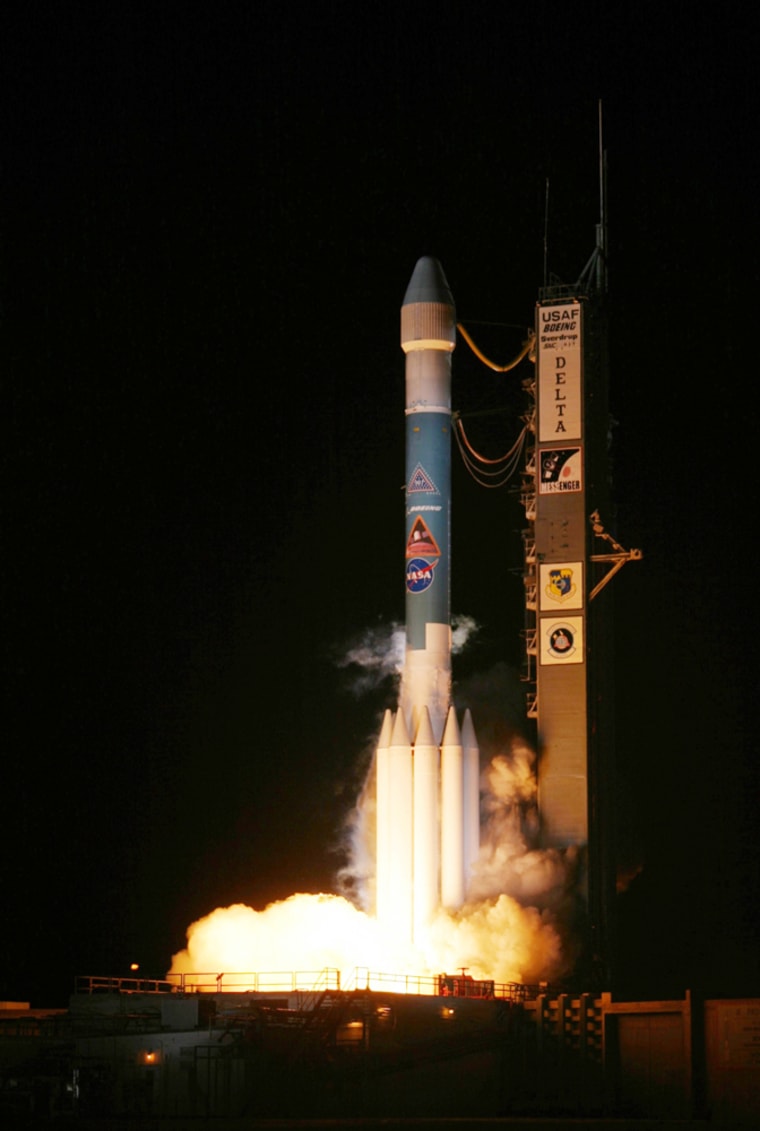A spacecraft named Messenger rocketed away Tuesday on a 5 billion-mile (8 billion-kilometer) journey to Mercury, the closest planet to the sun and a stranger to camera close-ups for the past three decades.
NASA launched Messenger in the pre-dawn moonlight on the roundabout ramble through the inner solar system. The 6½-year trip should have started a day earlier, but clouds from Tropical Storm Alex postponed liftoff.
“A voyage of mythological proportions,” a flight controller announced as soon as Messenger shed its final rocket stage.
Applause erupted in launch control. “That looked wonderful,” said launch director Chuck Dovale. “We bid Messenger farewell.”
Roundabout route
Scientists have been yearning to study Mercury up-close ever since Mariner 10 zoomed by three times in the mid-1970s.
If all goes well, come 2011, Messenger will be the first spacecraft to orbit Mercury.
The spacecraft cannot fly straight to Mercury; it does not carry nearly enough fuel. So it will fly once past Earth, twice past Venus and three times past Mercury for gravity assists — and make 15 loops around the sun — before slowing enough to slip into orbit around the small, hot planet.
Its seven scientific instruments will collect data for a full year in orbit around Mercury, an average 36 million miles (58 million kilometers) from the sun. That’s 2½ times closer to the sun than Earth — it would be as though 11 suns were beating down on Earth.
Beating the heat
Messenger will be blasted by up to 700-degree Fahrenheit (370-degree Celsius) heat once it reaches Mercury, but its instruments will operate at room temperature, protected by a custom-built ceramic-fabric sunshade just one-quarter of an inch (6 millimeters) thick. All Mariner 10 had was a quaintly old-fashioned umbrella.
That’s why, in large part, it’s taken so long to return to Mercury. Scientists had to figure out how to beat the heat.

Technology and opportunity converged only recently via NASA’s low-cost, planetary-science Discovery program. The entire tab for the Messenger mission, developed and run by Johns Hopkins University, is $427 million.
Mariner 10 provided “a glimpse of this planet of extremes,” said Orlando Figueroa, director of NASA’s solar system exploration division. Because it only flew by Mercury and did not circle the planet, Mariner 10 observed less than half the orb.
Messenger will view Mercury from all sides.
“I say we are long overdue for another visit with some permanence to help us unveil the secrets of this planet, the innermost and least understood of the terrestrial planets,” Figueroa said.
